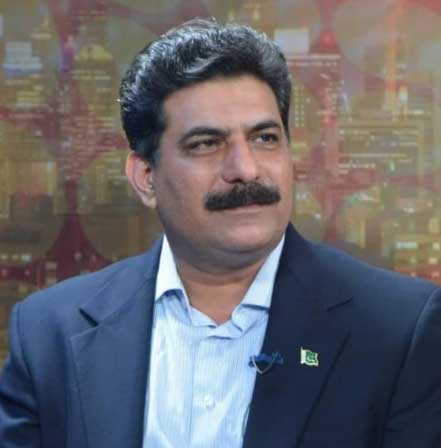The World Day to Combat Desertification and Drought is observed on 17 June each year to promote public awareness of international efforts to combat desertification. The day offers a chance to recognize that land degradation neutrality is achievable through problem-solving, strong community involvement, and cooperation at all levels.
Announcing the theme of 2022 Desertification and Drought Day “Rising up from drought together”, Ibrahim Thiaw, UNCCD Executive Secretary, said: “Droughts have been part of human and natural systems, but what we are experiencing now is much worse, largely due to human activity.”
Droughts are among the greatest threats to sustainable development, especially in developing countries like Pakistan, but increasingly so in developed nations too. In fact, forecasts estimate that by 2050 droughts may affect over three-quarters of the world’s population. Droughts and desertification affect many major sectors like Agriculture, Livestock, Forestry, Water supply and demand, Hygiene & sanitation which directly affect the country’s economy.
Pakistan is an agriculturally independent and diverse country. Pakistan’s agriculture sector plays a central role in the economy as it contributes 18.9 percent to GDP and absorbs 42.3 percent of the labor force. It is also an important source of foreign exchange earnings and stimulates growth in other sectors. This means that Pakistan has an edge to avoid the drought and water resource management issues through a strong agricultural sector.
The United States Agency for International Development (USAID) works with the Government of Pakistan and development partners to boost private sector development, enhance agricultural productivity, and improve trade and the business-enabling environment. Through its partnership with the Government of Pakistan, USAID is stimulating the profitable agrarian sector. Since 1952, the United States has provided Pakistan with economic assistance. This support includes commodity imports, technical assistance, and capital project assistance.
The National Agriculture Research Centre (NARC), Islamabad is one of the vibrant examples of US-Pakistan partnership through USAID. NARC established in 1984 is the largest research center of the Pakistan Agricultural Research Council (PARC) with a total land area of approximately 1400 acres. Its physical facilities include experimental fields, laboratories, greenhouses, gene bank, library/documentation, auditorium, machinery & lab equipment repair workshops, stores, hostels, cafeteria, audio-visual studios, etc.
Pakistan’s Green Revolution started because of activities initiated by the researchers and scientists at this very center. From 1974 to 1985, USAID support helped build NARC facilities and trained more than one hundred scientists and technicians, which led to the establishment of Pakistani agricultural research systems.
The US Government’s development assistance to the agricultural sector was not only confined to NARC. US-Pakistan partnership in Agriculture sector has a long history that continued in the form of the following projects:
Strengthening of Agricultural Research in Pakistan – 1974-85: The purpose of this project worth $27.8 million was to establish a functioning centrally coordinated program of agricultural research for major agricultural commodities which effectively translates policy guidelines into specific research projects with achievable results to increase agricultural production and improve the income of farmers. The main project elements comprised technical assistance, training, commodities, national coordinated research programs for major agricultural commodities/disciplines. NARC was constructed in Islamabad under this project. In addition to that a total of 197 participants were sent abroad for advanced degrees and for short-term non-degree training under the participant training component.
Management of Agricultural Research and Technology (MART) project – Mid 1980s: The $38 million project is a major endeavor to increase the effectiveness of Pakistan’s agricultural research system, and to develop its human resources and strengthen its institutions. The goal of the MART Project was to improve the income of small farmers, sustain an increase in food and fiber production and conserve the natural resource base.
Agriculture Linkages Program (Endowment fund) -1999 to-date: The objective of the ALP is to promote and support agricultural research and development activities in accordance with Pakistan’s long term development goals and to promote long term scientific cooperation between Pakistan and the United States in the agricultural sector. The project endowment fund is managed by an independent body that possesses all of the powers necessary to carry out its objectives. To date, the project costs 23.2 million dollars.
Agricultural Innovation Program – 2013-2017: The AIP is yet again a major investment project with the cost of $30 million which seeks to expand agricultural science and technology innovation to meet the food needs of Pakistan’s rapidly growing population and to address recent agricultural threats such as crop diseases and declining yield potential and soil health. This activity collaborates closely with the Pakistan Agricultural Research Council, the Consultative Group on International Agricultural Research (CGIARs), and the University of California at Davis. The Program builds partnerships with public and private institutions for sustainable development and applies innovative agricultural technologies to stimulate growth of the agriculture sector.
USAID also developed collaborations with international research centers and provided financing for several nationally coordinated research programs. This is an excellent example of how the US-Pakistan partnership can build a foundation for economic growth and food security.
The United States government remains committed to the long-term growth and success of Pakistan’s agriculture sector, which is a significant force behind Pakistan’s economy and provider of employment.
Sign in
Welcome! Log into your account
Forgot your password? Get help
Password recovery
Recover your password
A password will be e-mailed to you.







